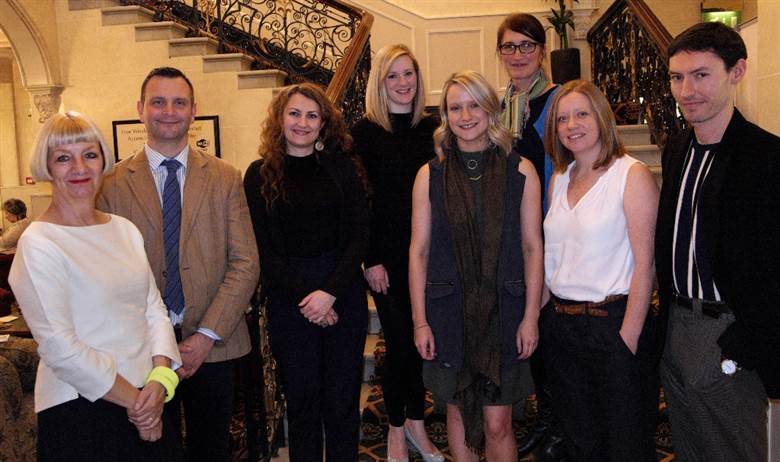Opportunities for textile designers are growing, conference hears
28/10/2015

“Textile designers tend to be people in the background but I think it’s time that the population knows what goes into their clothes, what the supply chains are,” she said. “Should we be credited like a hair or make-up artist in the fashion world?”
She highlighted some of her company’s collaborations with brands such as Converse, Boxfresh and Fred Perry, as well as her own studio work with fashion houses such as McQueen and Marc Jacobs.
Funded by the Campaign for Wool, The Clothworkers’ Company, The Drapers’ Company and The Weavers’ Company, the two-day event brought together professionals and students from 21 universities and art schools.
Organiser James Sugden of The Weaver’s Company invited the students to consider the diverse roles that make the modern textile business function in the 21st century: “There is a vibrant industry out there, with 100,000 people working in textiles in the UK.”
Beryl Gibson explained her role as a colour consultant and its impetus in driving sales in the fashion industry. She advised the audience to build on their contacts: “Try and have a particular customer or retail level in mind. I go to various trade shows, Première Vision Paris, yarn fairs, interior fairs, it all helps you.”
Paul Johnson, managing director of Huddersfield-based WT Johnson & Sons, told delegates about the role of fabric finishing. “Textiles manufacturing is advanced manufacturing. But we recognise we are working with a natural fabric and you can’t get consistency every time, you recognise that experience and expertise have an advantage. All our people are decision makers, they see what’s going on with a fabric and act accordingly. We have lots of opportunities for dye technicians, designers… all of them trying to make cloth special.”
Gary Eastwood, managing director of woollen and worsted mill Pennine Weavers, said: “There’s a strong area of opportunity in textile production. We have a skilled workforce of 78 and we make continual investment in technology, systems and people. It’s not a nine to five job – it’s hard but well rewarded.”
On day two, the students gained experience of modern textile production methods through tours of five local textile manufacturers – felted wool specialist AW Hainsworth & Sons, woollen weaver Abraham Moon & Sons, interiors and transport fabric specialist Camira, Pennine Weavers and worsted weaver Stanley Mills.
Image: Speakers included Andrew Stevenson, textile designer, Paul Smith; Sinclair Paterson, director, Sinclair Duncan Textiles; Coral Beattie, designer, Begg & Co; Danielle Saletes, designer, M Makower & Co; Mary Penny, designer, Johnstons of Elgin; Amy Miskelly, Elliott + Miskelly; and Harriet Wallace-Jones, Wallace Sewell








